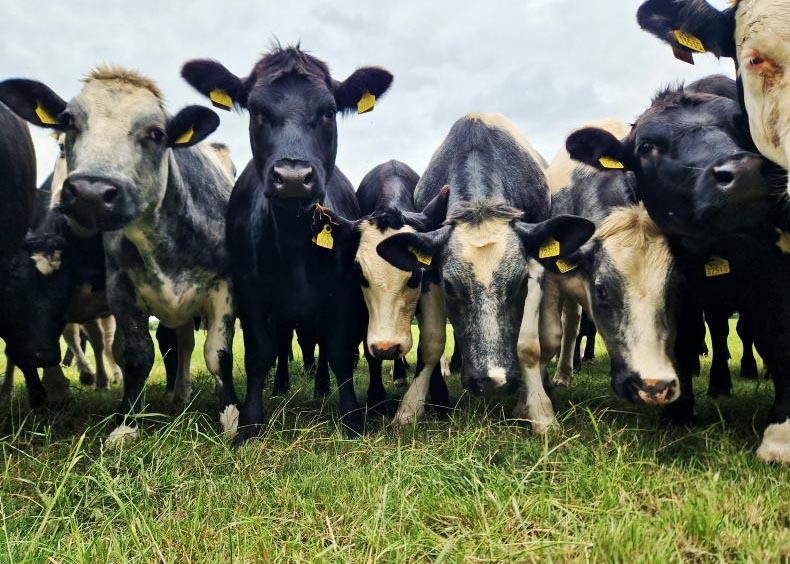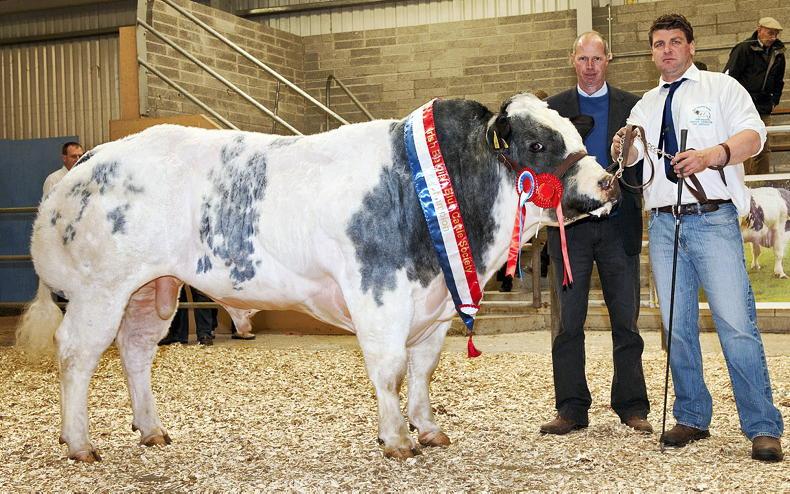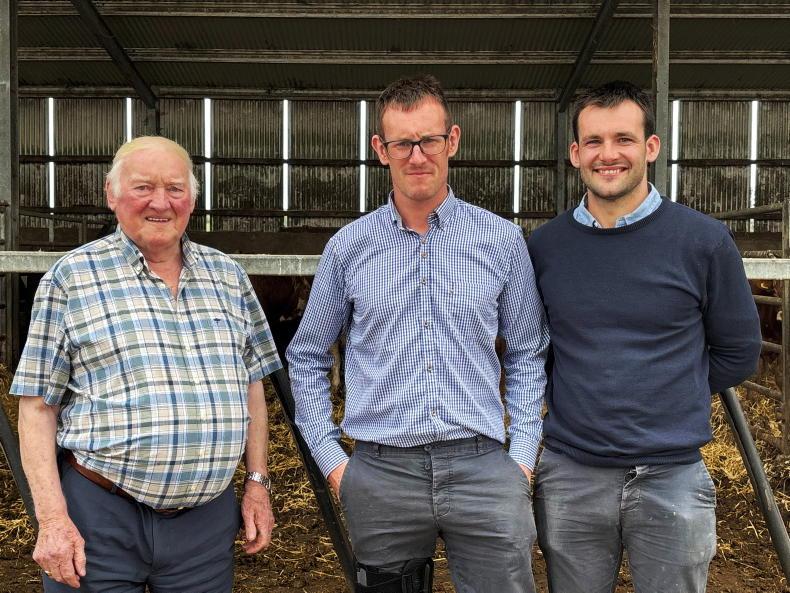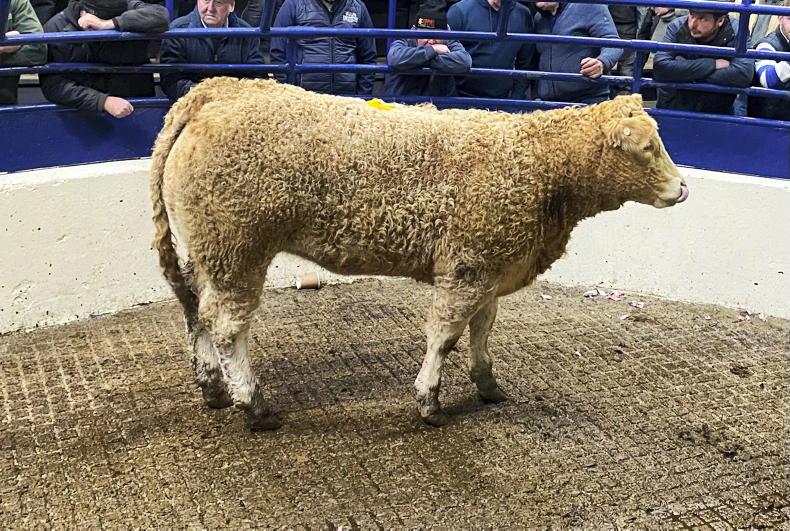While much of the talk over the last 10 years has been around dairy expansion and higher dairy cow numbers, a small cohort of beef farms have been slowly and quietly becoming part of a very elite group finishing hundreds of thousands of beef cattle on an annual basis.
Many of these farms are either factory owned or closely aligned to a meat processor. Some of the herds are in a farm owner’s name but are effectively being jointly managed by a meat processor.
This model of meat processors owning their own finishing farms has come in for a lot of criticism in the past from smaller farmer finishers who feel that factories can control prices through increasing the numbers of cattle that they slaughter out of feedlots on a weekly basis depending on their requirements.
If cattle are scarce, concerns arise that instead of raising the price they increase the numbers coming from the feedlots and this keeps a lid on the price.
The 2019 factory blockades saw beef factories struggle for supplies and tightening the number of farmers they deal with would be seen as a big advantage should that issue ever arise again.
Beef finishing has seen a huge change in Ireland over the last 10 years.
In 2012 there were 61,042 farmers finishing cattle in Ireland. This number has dropped to 48,846 in 2022, meaning 12,000 farmers have exited the cattle finishing system during that time. This equates to a 20% drop in farmers finishing cattle.
Two of the largest falls in numbers have taken place in the last two years, with 4,696 farmers ceasing slaughtering cattle in 2021 and another 3,252 farmers quitting slaughtering in 2022.
Some of those exiting the business would have moved to selling finished cattle live in marts. However, most, and particularly the smaller operators, are gone for good.
While the overall number of farmers slaughtering cattle has reduced, this is heavily weighted towards smaller finishers.
Herd sizes
Table 1 outlines the data of different herd sizes ranging from 1-25 animals slaughtered to over 1,000 cattle slaughtered on an annual basis.
If we look at the 1-25 animal category, we see a 13,514 drop in the number of farmers slaughtering cattle over this period. This represents a 28% fall in farmer numbers in this category, by far the largest drop of all categories.
Most other categories have shown marginal gains of 100-200 farmers per category over the last 10 years.
The category which has seen the largest increase over the last 10 years is the number of finishers finishing over 1,000 cattle.
This category increased from just 78 farmers finishing over 1,000 cattle in 2012 to 160 farmers finishing over 1,000 cattle in 2022.
Some of this may have been due to some of the larger units strategically splitting farms to avoid issues with capping on large basic payments.
This cohort of farmers were responsible for finishing 413,495 cattle in 2022 or an average of 2,584 head. At a 390kg carcase and an average beef price of €5.04/kg in 2022 that’s just over €5m worth of cattle being slaughtered on an annual basis from each of these individual herds.
In 2022 there were 364 herds accountable for the slaughter of 554,505 cattle, just under a third of the national kill. To put this in context there were 532,223 cattle slaughtered from 44,553 herds slaughtering between 1-50 cattle in 2022.
Table 2 goes into some of the finer detail in relation to the 160 herds who slaughtered over 1,000 animals in 2022. These herds range in size from 67 slaughtering between 1,001 and 1,500 cattle in 2022 to 20 herds slaughtering over 5,000 cattle each in 2022.
Many of these 5,000+ herds are either operated by or closely aligned to factories and are killing cattle on a weekly basis.
Controlled finishing herds
Recent data released by the Department of Agriculture and Food shows that record numbers of animals were slaughtered from controlled finishing units in 2022. These farms are restricted from a TB point of view in selling animals live and many of these units are larger finishing units. There were 416,500 head of cattle slaughtered in 2022 out of controlled finishing units.
This was a 22% or 75,500 head increase on the 2021 number. The number of cattle slaughtered from these herds has increased from 263,000 head in 2017 or a 60% increase over the last six years. Monthly numbers peaked at 41,000 in November 2022, the highest monthly kill from controlled finishing units in the last six years.
Some 171,000 cattle were slaughtered in Irish factories during November 2022 so that means that 24% of animals originated in a controlled finishing unit during November 2022.
The news that we have 160 farms now accounting for almost 25% of the national kill will come as no surprise to many.
It makes sense for factories to streamline the process to deal with fewer numbers. Buying cattle off a few individuals on a weekly basis is a lot easier than dealing with hundreds for smaller numbers.
Dealing with 160 farmers for over 400,000 cattle also means contracts and forward prices can be kept very tight. These farmers will all have sat down with factory bosses to hammer out deals and forward contracts before they lift a finger around the mart ring. That’s probably one of the biggest positives of the current system.
Because these farmers are working off contract prices, they know exactly where they can go when buying animals. These mega finishers have a lot of power when it comes to hammering out a deal on price and the factories themselves may be in some cases involved in the feedlot operations.
Negatives
This is often over and above what smaller farmer finishers can afford to pay. One of the biggest negatives of the system is that in giving this higher price to the larger feedlots, they need to balance the books and this leads to a lower base quote being quoted to smaller finishers.
You could argue that some farmers selling store cattle in marts are better off to have these customers on guaranteed beef prices buying animals around the ring.
Over the last two years some of these smaller farmers have opted to sell animals close to finish or finished in their local mart, with these animals being purchased by one of the larger feedlots for immediate slaughter.
This would have driven numbers being slaughtered out of some of these larger herds. What is most worrying is the huge drop-off in numbers of herds slaughtering cattle over the last two years. Almost 8,000 farmers exited finishing any cattle in 2021 and 2022. If the current trend continues our beef industry will be in the hands of a very small number of people in the next few years.
Personally, I don’t think that’s good for farmers and especially not good for the traditional small family farm slaughtering under 50 animals annually.
These small family farms will pay the price for the forward contracts and will essentially be squeezed out of business. Moving away from the smaller family farm model of finishing cattle may make sense for processors to streamline procurement and keep their deals secret, but is it good for Ireland’s image of finishing cattle?
Factory agents buying finished cattle in marts over the last six months have in some cases been paying 50-60c/kg more than that animal is worth in the factory. So who’s taking the hit here? There are some that would argue that factories killing their own cattle could account for one of the reasons the current pressure is coming on the trade. Factory agents are reporting some of the lowest ever numbers of cattle being finished on farm yet the kill continues to hit 35,000 head on a weekly basis. Where are the cattle coming from?
The 160 herds killing 400,000 cattle annually would account for a lot of this and these huge finishing units that have thousands of cattle on feed offer beef factories huge scope when looking for numbers to fill gaps on a weekly basis. Most processors will have a full line of sight of cattle coming from these herds and can then manage supplies to their best advantage.












SHARING OPTIONS